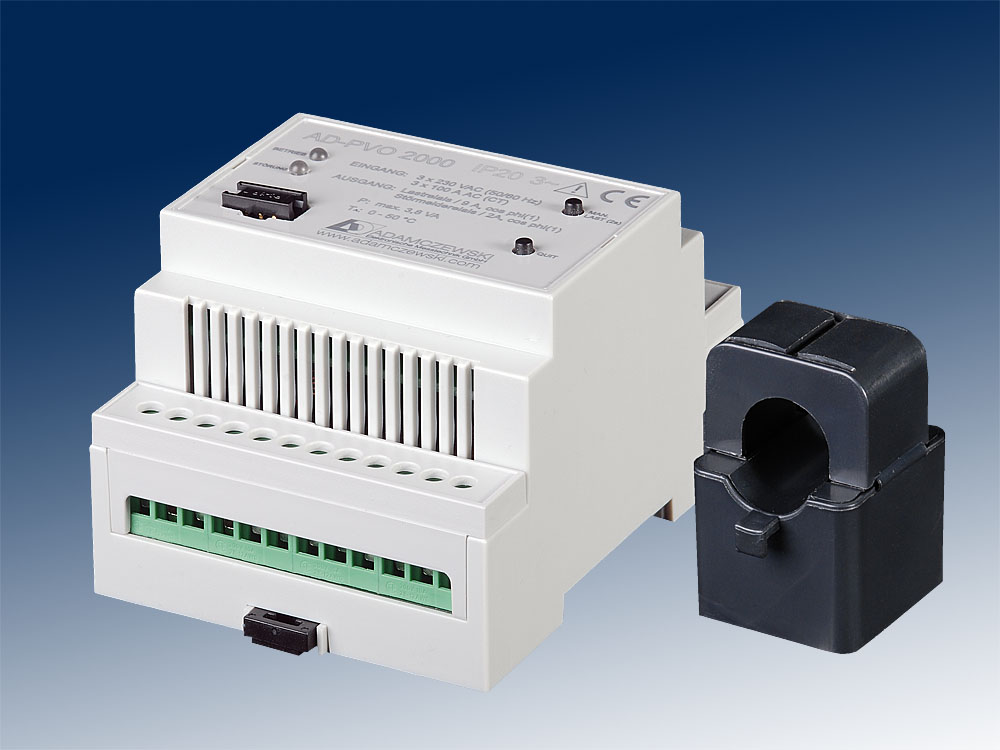AD-PVO 2000 GT
Description
The Photovoltaic-Optimizer AD-PVO 2000 monitors the supply of solar energy to the main connection of a building. If the supply output exceeds a limiting value set by the customer via a PC, an internal output relay is triggered. With this switching relay, electric consumers (i.e. electric heating rod in the process water tank of the heating, air-conditioning device or heat pump) can now be triggered. With the AD-PVO 2000, the energy is converted on site and not fed back into the public low-voltage network. Through the use of this device PV systems are optimized for their own consumption and relieves the public low-voltage grid. Additionally, the AD-PVO 2000 has an error message LED and an integral error message relay, via which error messages (i.e. permanent failure of the feeding) can be displayed or acoustically signalled outside the distributor cabinet. It is recommended to mount the AD-PVO 2000 directly after the counter of the energy supply in the distributor cabinet, as measuring should be carried out as close as possible to the feeding point. The device requires all three outer conductor voltages for its measurements and the zero conductor. The AD-PVO 2000 measures the current via three external split current current transformer, which can be mounted directly onto the 3 phases after the counter, therefore saving space (without separation). The Photovoltaic Optimiser acquires the self-generated supply energy from the measurement voltage L1. Due to its efficient switching network and its low power consumption, the AD-PVO 2000 generates only a negligible amount of warming and can therefore be lined up closely.

Application
For optimising the self-generated energy at photovoltaic units
Specific characteristics
- Self-sufficiency through measuring voltages
- Internal overload and fault relay
- Current measurement with clamp on/split core current transformer
- Configuration via PC
- compatible with the most SG-Ready compatible heat pumps
